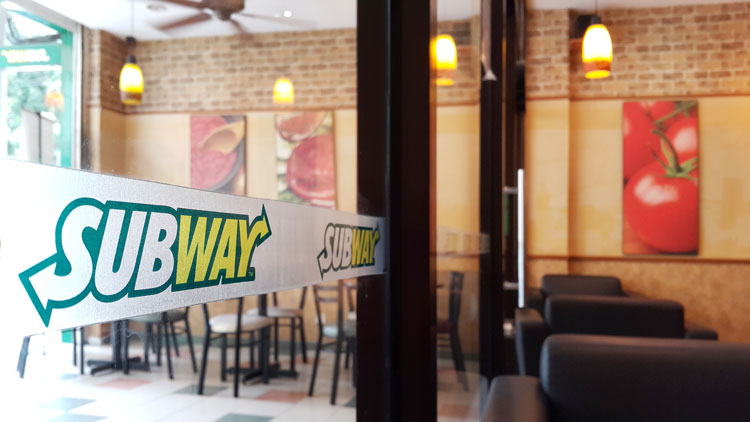Subway’s cake
- Like
- Digg
- Del
- Tumblr
- VKontakte
- Buffer
- Love This
- Odnoklassniki
- Meneame
- Blogger
- Amazon
- Yahoo Mail
- Gmail
- AOL
- Newsvine
- HackerNews
- Evernote
- MySpace
- Mail.ru
- Viadeo
- Line
- Comments
- Yummly
- SMS
- Viber
- Telegram
- Subscribe
- Skype
- Facebook Messenger
- Kakao
- LiveJournal
- Yammer
- Edgar
- Fintel
- Mix
- Instapaper
- Copy Link
Posted: 7 October 2020 | Dr. Sylvain Charlebois | No comments yet
COVID-19 has not been kind to restaurants, as we know. But for Subway restaurants, the problems are continuing.


Subway is the world’s largest restaurant chain with nearly 42,000 locations – more than either Starbucks or McDonald’s – but the chain is shrinking rapidly. It was already experiencing difficulties pre-pandemic and closed several thousand restaurants in North America. Now, a multitude of its franchises will not survive the pandemic, and there are even more problems on the horizon for Subway.
Ireland’s Supreme Court recently ruled that rolls made by Subway contain too much sugar to be legally considered bread. The decision stems from an appeal by Bookfinders Ltd, a Subway franchisee in Ireland, which stated that it should not have to pay tax because many of the products it sells are “basic foods” and should benefit from a preferential rate. In the end, however, the highest court ruled that Subway sells cake, or high-sugared buns, and not bread, according to Ireland laws. For the rest of us, it is indeed bread, but with a lot of sugar. Anyone who has ever visited a Subway restaurant will tell you this was obvious by the scent.
While some will say this is fraud, others will rule that the chain is showing a lack of judgment.
This is not the first time the chain has been affected by hugely negative publicity. The CBC ordered a DNA analysis of several fast-food chicken sandwiches and concluded that Subway chicken was actually only half meat, the rest consisting of soybeans. Subway strongly refuted the allegations, claiming the CBC’s comments were “absolutely false” and calling for a retraction; however, an Ontario court recently agreed with the CBC.
Furthermore, a few years prior to this, the chain was accused of selling 11-inch sandwiches, not a full one-foot, or “footlongs,” as they’re called. It’s been one disaster after another for this American chain.
While some will say this is fraud, others will rule that the chain is showing a lack of judgment. Regardless, the image of the chain has been tarnished.
The chain is trying to restore its reputation this autumn by way of a new campaign. The sandwich giant revealed its latest marketing scheme in September with adverts that will air during the current NFL season, featuring New England Patriots’ coach Bill Belichick, former NFL player Deion Sanders, and current NFL players JJ, TJ, and Derek Watt. This campaign could be vital for the company and its franchises that have struggled to regain marketing relevance after ending the ads that included the famous Jared. The chain’s sales have been faltering for years and thousands of their restaurants have closed.
Apart from marketing and procurement gaffes, Subway’s business model is severely challenged. Subway’s approach encourages franchisees to open thousands of cheap locations around the world, often dangerously close to existing Subway stores. With sales falling and too many locations, many Subway franchisees are struggling to make a profit. Franchisees are still required to pay eight percent of their sales, one of the highest percentages in the industry.
Thousands of Subway locations across Canada, the United States, and elsewhere have been opened by franchisees themselves, whose market evaluations were conducted independently of the parent company.
Getting a Subway franchise isn’t that expensive either. It only costs in the region of $150,000 to $350,000 to open a Subway location today, making it one of the cheapest franchises in the restaurant industry. For McDonald’s, the cost is between 1.5 and 2.5 million dollars to open a single franchise. The pact between the parent company and the franchisees is quite different.
With its image problem and shaky model, if this autumn’s campaign doesn’t work for the Subway chain, the number of franchises will drop dramatically, to the point that the chain could disappear completely within a few years.
Author biography
Dr Sylvain Charlebois is a professor in food distribution and policy in the Faculties of Management and Agriculture at Dalhousie University in Halifax, Canada. He is also the Senior Director of the Agri-food Analytics Lab, also located at Dalhousie University. His current research interest lies in the areas of food distribution, security and safety.
Related topics
Related organisations
Canadian Broadcasting Corporation (CBC), McDonald's, Starbucks Coffee Company, Subway, The Supreme Court of Ireland
Related regions
Related people
Bill Belichick, Deion Sanders, Derek Watt, Dr Sylvain Charlebois








